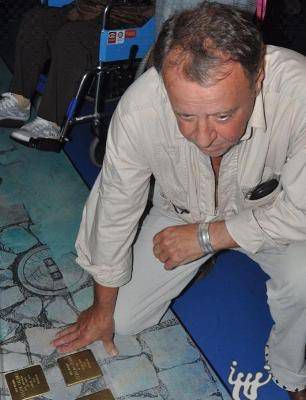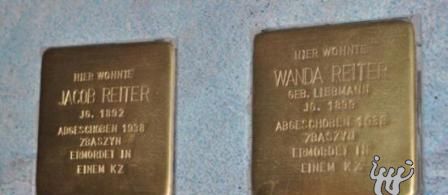德国馆
爱思英语编者按:据世博网消息,走进德国国家馆,你也许会发现地上有许多刻有字母和数字的黄铜石,方方正正的,在金灿灿的外表之下仿佛向过往游客诉说着什么。这些不寻常的黄铜石究竟是做什么的呢?记者今天特地前往一探究竟。

据介绍,这是德国艺术家GUNTER DEMNIG展示的一种个人创意:在纳粹受害者生前最后居住的房屋前,将镶有黄铜片的石块铺设在人行道上,黄铜片上刻有受害者的姓名及出生和死亡的日期。这样,走在德国街头,你就会在不经意间与那段特殊的历史邂逅。
GUNTER DEMNIG表示,这一创意的灵感来自犹太法典中的一句话:当一个人的名字被忘却时,这个人才算真正被遗忘。起初,这个创意难以顺利付诸实践,大多数人认为刻有受害者名字的黄铜石被人践踏是一件极其屈辱的事情,不过后来渐渐地大家发现,若要仔细阅读黄铜石上的信息,唯有虔诚的下跪才能做到。就这样,从当初的不理解和反对,到目前在德国已经有562个城市铺设这样的“绊脚石”,这位63岁的艺术家通过自己的努力让人们直面纳粹时代的德国历史,以此希望那样的暴行不再重演,受害者不被遗忘。
在德国,铺设黄铜片“绊脚石”这一项目没有任何来自官方的资助,完全通过民间捐款来完成。所有受害者的亲属只要出资95欧元就可以铺设这样的一块石头。而此次黄铜片“绊脚石”出现在上海世博会德国馆,则旨在表明每一个人都可以力所能及地为城市文化、为国家历史作出自己的贡献。

Walking into the German Pavilion, one will find the floor is studded with small cobble-shaped brazen plaques with engraved words in memory of Nazi Holocaust victims.
These are stolpersteines (stumbling stones in German) which have been installed in streets in Germany by German artist Gunter Demnig.
He carved victims' name as well as years of birth and death on these small memorials.
The creation was inspired by a sentence in Jewish Law: a person was totally forgotten only when the name of a person was forgotten, the artist said.
Though people first thought having these names on the brass stumbling stones being stepped on could be an insult to those victims, then they found out that one had to kneel down to read the names engraved in the plaque. 更多信息请访问:http://www.engbus.cn/
Kneeling down in front of the victim names, it's a symbol of showing respect, the artist said.
The stumble stones now can be found in streets in 562 German cities.
The 63-year-old German artist said he hoped that such atrocity would never happen again and Nazi holocaust victims would be remembered through his efforts.
The Stumbling Stones project was solely funded by non-governmental donations. Also, any relatives of Nazi Holocaust victims can pay 95 euros for one stumbling stone installed.